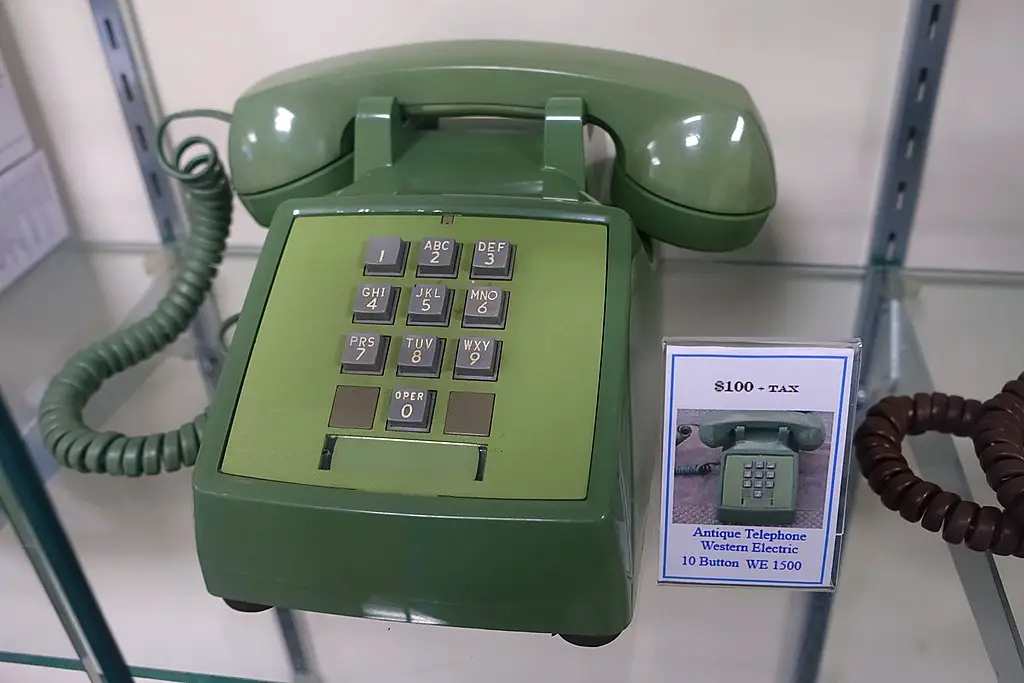The design of the telephone keypad didn’t happen by chance but resulted from years of research on the best position of the keys on a new telephone device, the push button phone.
We’re all familiar with a telephone keypad, with its three rows and three columns starting with one, two, and three at the top and zero by itself at the bottom in the middle column flanked on either side by a pound (or if you prefer hashtag) key and a star key. This layout is found on ATMs, door locks, at gas pumps, and almost anywhere else where a numbered keypad is used (except, of course, on a calculator). All this originated with the push button phone.
But the push button phone only came about because of the technology that preceded it, which was the rotary dial phone. The rotary dial phone, for those who never used one, had a circular dial with holes in it corresponding to numbers (and letters).
In order to dial the phone, the finger was placed in the hole corresponding to each digit of the phone number and moved in a clockwise direction until the finger hit a stop. When the finger was released, a spring would move the dial back to the original position at a set speed. The process was repeated until all the numbers were dialed.
Interestingly, we still use the term “dial” to call a number and “hang up” to end a call. These terms came from rotary phones and the process of turning the rotary dial, and then when the call ended, to “hang up” the receiver or put it back into the cradle it sat in when the phone was not in use.
Rotary dial phones used a series of pulses to encode the number being dialed. When the dial moved backward, an electrical circuit was broken and then connected that corresponded to each number. This series of pulses was called “Loop Disconnect.”
In the late 1950s, researchers at Bell Laboratories began working on an alternative to the rotary dial telephone. They developed dual-tone multi-frequency (DTMF) and the push button phone. DTMF was the mix of using one of four low-frequency tones and one of four higher-frequency tones. It was used for push-button dialing and was trademarked as “Touch Tone” dialing. The problem then was how they were going to arrange the numbers.
Buttons were the choice to improve the accuracy during dialing, but the best layout for the buttons was the problem. Researchers could have gone with the rotary dial layout or another push button device, the calculator. A logical pick was the calculator layout, but when researchers contacted calculator manufacturers, they had no idea why the layout was high numbers on top and low numbers on the bottom. No research had been done on what was best for the users of the devices.
Researchers at Bell Labs tested sixteen different keypad layouts on other employees. Some of the designs placed the buttons in a circular way in various configurations, in a cross pattern, a bowling pin configuration, and in horizontal and vertical rows, to name a few. Tests were performed that measured accuracy, performance, and the user’s subjective opinion.
The findings from the study conducted at Bell Labs were published in their technical journal in 1960. A three-by-three matrix with zero at the bottom was found to be the layout of choice and the easiest for people to master. The layout also was ideal because it made matching the letters of the alphabet easier and more natural. With the beginning of the alphabet at the top with the numbers 1–2–3, it was a more natural connection than if the numbers were 7–8–9, like on a calculator.

Bell Telephone introduced the push button telephone with touch-tone dialing on November 18, 1963, to customers in Pennsylvania. The first touch-tone telephone was the Western Electric model 1500.
But what was noticeably absent from this phone were the # and * keys. These weren’t added to push button phones until 1968, and they had no use at the time. The thinking was that a use would be developed at some point, possibly to be used to access computers.
It wasn’t until the 1980s that the # and * keys finally found different uses. AT&T gave the * key the function to call people back who had just called (*69), and the # key found a use on voice-mail systems, such as to finish a message when a user was instructed to press #.
Sources: Data Genetics, EDN, ABC, Solid Signal, American Psychological Association, History of Information, Pittsburgh Post-Gazette



